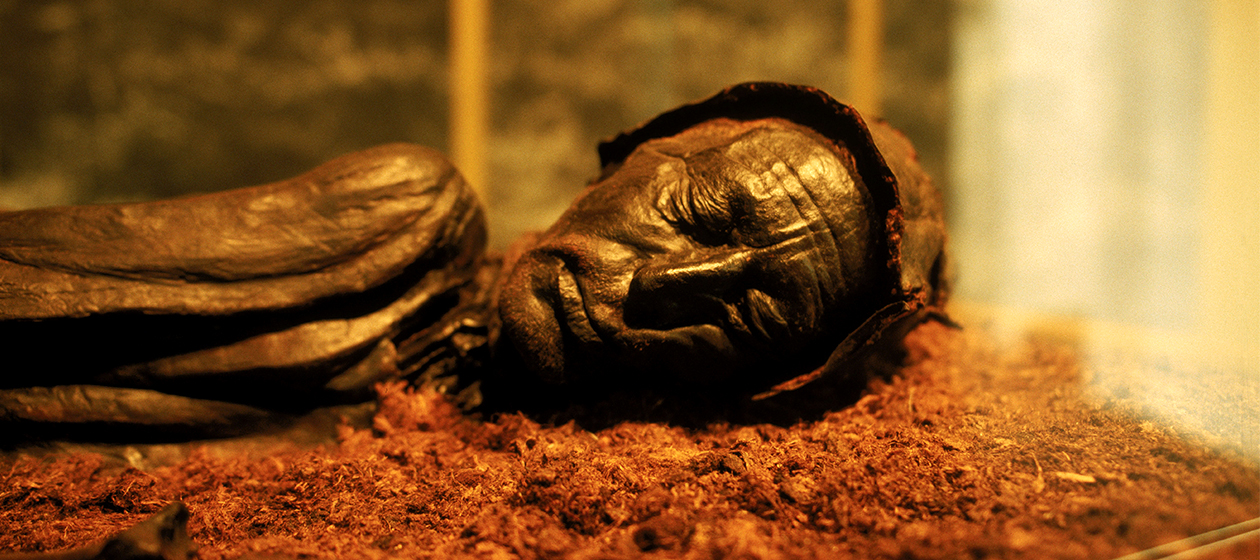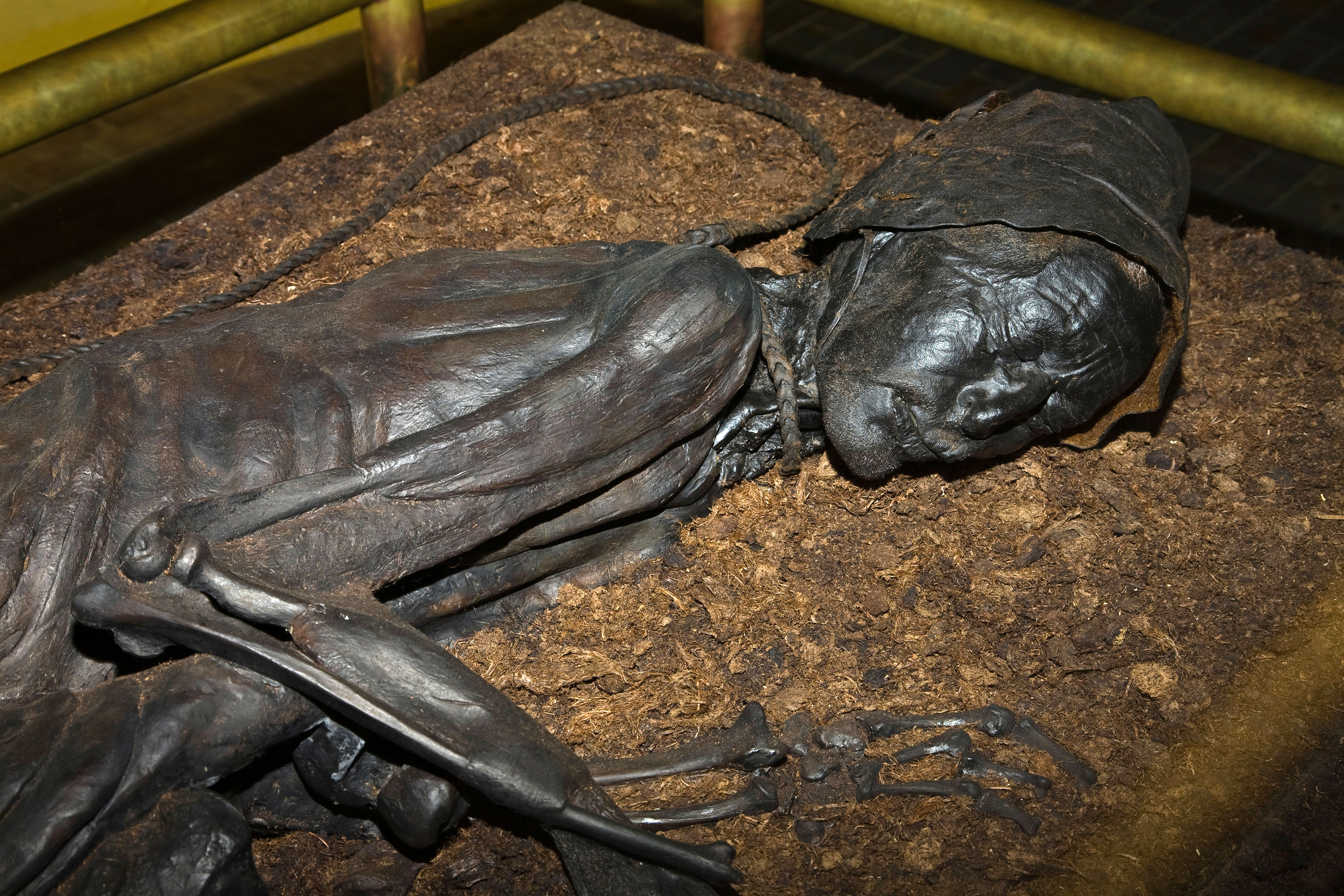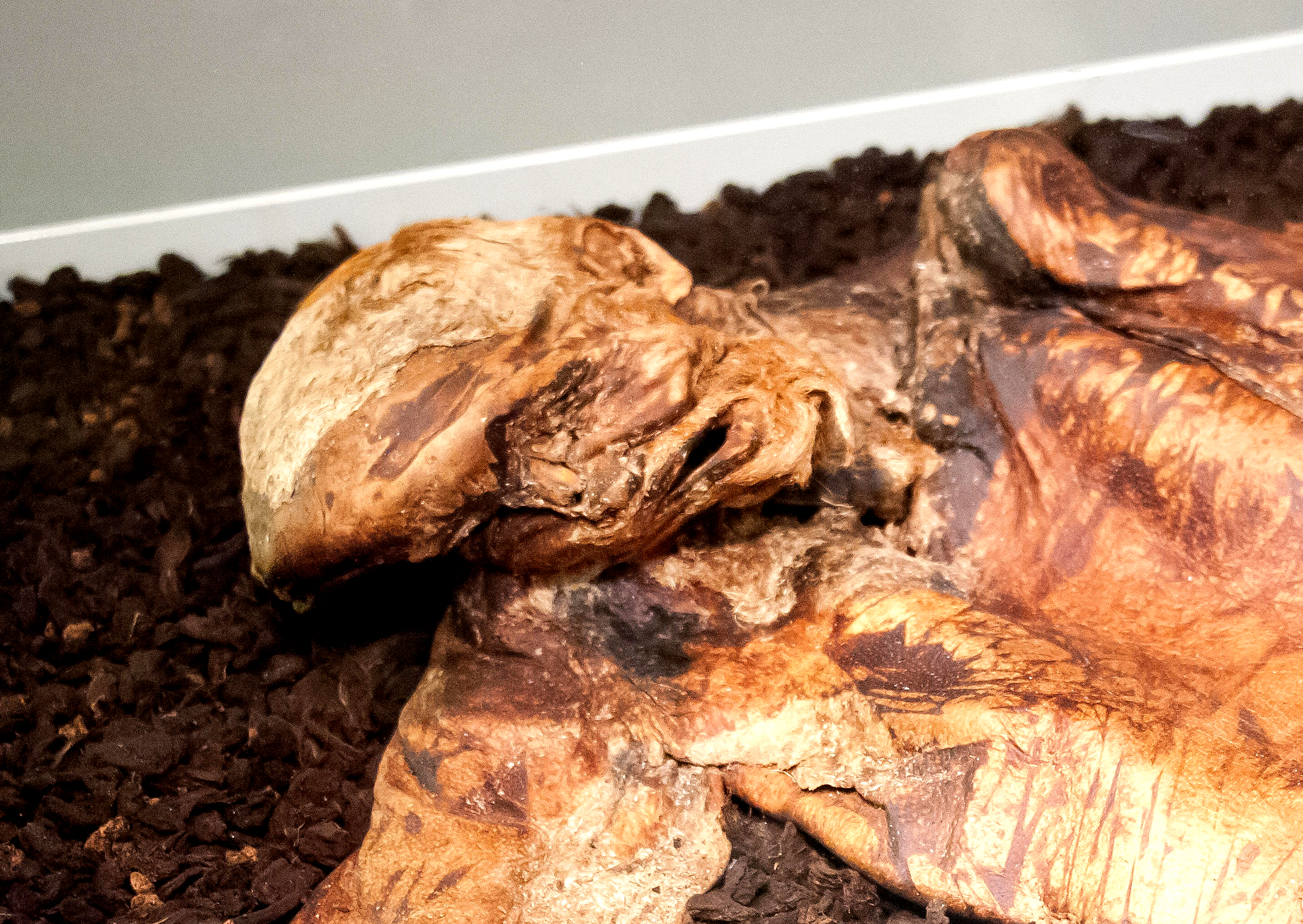I am positively obsessed with mummified bog people
These dead bodies simply take my breath away


"There is a strange power in bog water which prevents decay," noted an 1837 Danish almanac. "Bodies have been found which must have lain in bogs for more than a thousand years, but which, though admittedly somewhat shrunken and brown, are in other respects unchanged.”
These leathered corpses are called bog bodies (or bog people), and I love them. Were it possible — and I don't think it is — I would like to be buried in a bog.
This is, I realize, something of an odd fascination, and I will attempt to explain it. But first permit me a brief detour of science and history.
The Week
Escape your echo chamber. Get the facts behind the news, plus analysis from multiple perspectives.

Sign up for The Week's Free Newsletters
From our morning news briefing to a weekly Good News Newsletter, get the best of The Week delivered directly to your inbox.
From our morning news briefing to a weekly Good News Newsletter, get the best of The Week delivered directly to your inbox.

A bog is a sort of wetland with an accumulation of peat. Though it looks like dirt to the untrained eye, peat is actually half-decayed vegetable matter, mostly moss, that holds together in a way regular soil does not. It can be cut into brick-like shapes, dried, and burned, as indeed it has been in northern Europe for millennia.
Peat bogs are anaerobic — meaning the sort of bacteria that typically facilitate decomposition can't live there — and as acidic as vinegar. When they're in cold regions close to salt water, they develop what that almanac called a "strange power" of preservation. It's a bit like a combination of pickling and tanning, and it works on people. (And butter, too!)
In Denmark, Ireland, and nearby regions where these preservative bogs are common, ancient people used the wetlands for more than fuel. They were also the scene of ritual human sacrifice, as well as less exotic but equally gruesome purposes, like concealment of murder and, per the Roman historian Cornelius Tacitus, execution for those guilty of "deeds of shame." This is how bodies end up in bogs.
There are a lot of bodies in bogs. Peat cutters have been finding them for centuries, but until the 1840s they were taken to be unknown victims of relatively recent crimes and accorded proper Christian burials. The mistake was quite reasonable, as the preservation of a bog is very unlike that of man-made mummies. It's entirely happenstance, and disturbingly good.
A free daily email with the biggest news stories of the day – and the best features from TheWeek.com
The most famous bog body is Tollund Man. (That's him at the top of this article.) He is believed to have lived in the 4th century B.C. and now has his own website. The body was discovered in Danish peat in 1950 by a pair of brothers who promptly called the police. As the real nature of their discovery became evident, a renowned archaeology professor named P.V. Glob came to investigate. He found a man who "lay on his damp bed as though asleep," Glob would later write. "His face wore a gentle expression — the eyes lightly closed, the lips softly pursed, as if in silent prayer."

Tollund Man's face, though indeed "shrunken and brown" and slightly squished, looks as if it might come to life at any moment. He seems kind, if there's anything to the Dorian Gray theory of facial development, and it is bizarre to think he grew his five-o'clock shadow while Plato and Aristotle walked the Earth. Tollund Man was found nude except for a leather cap and belt and the noose that was used to hang him as sacrifice, whether willingly or not we do not and cannot know.
The Silkeborg Museum near Aarhaus, Denmark, is Tollund Man's usual resting place today. "Most people get very silent" when they see him, Ole Nielsen, the museum's director, told Smithsonian Magazine. "Some people faint, but that's rare."
I've yet to make it to Denmark, but last year I did manage to see another well-known bog body, Lindow Man, at the British Museum. This one isn't quite as lifelike as Tollund Man. Most of his hands and lower body are missing, and his face is rather more distorted. His torso is flat but wrinkled, like a leather bag. Lindow Man was killed about 2,000 years ago. He ate burnt bread at his last meal and died in the springtime.

I was excited to visit the British Museum generally, and Lindow Man specifically, when I went to London, but the encounter wasn't quite as I imagined. I wanted to take a photo to show a friend who shares my bog body interest. I'd planned, half-consciously, to put a picture on Instagram, to tag her and add a comment about how we ought to organize a trip to see all the best specimens.
But I found I couldn't take the picture I wanted. I couldn't seem to get an angle that shared how human he was. Every snap I took of Lindow Man didn't show the object of my fascination. It couldn't capture the unanswerable questions that make bog bodies so intriguing to me. It couldn't communicate the experience of near time travel I feel looking, entirely by chance, at someone who died 500 generations before I was born. How strange it is to come face to face with a contemporary of Christ! Each successive photo felt more futile and disrespectful, so I put my phone away and moved on to other exhibits.
I still hope to take that trip, someday, to see Tollund Man in person. As the Irish poet Seamus Heaney wrote:
Some day I will go to AarhusTo see his peat-brown head,The mild pods of his eye-lids,His pointed skin cap.In the flat country near byWhere they dug him out, […]Something of his sad freedomAs he rode the tumbrilShould come to me, driving,Saying the namesTollund, Grauballe, Nebelgard,Watching the pointing handsOf country people,Not knowing their tongue.Out here in JutlandIn the old man-killing parishesI will feel lost,Unhappy and at home. [Seamus Heaney]
Bonnie Kristian was a deputy editor and acting editor-in-chief of TheWeek.com. She is a columnist at Christianity Today and author of Untrustworthy: The Knowledge Crisis Breaking Our Brains, Polluting Our Politics, and Corrupting Christian Community (forthcoming 2022) and A Flexible Faith: Rethinking What It Means to Follow Jesus Today (2018). Her writing has also appeared at Time Magazine, CNN, USA Today, Newsweek, the Los Angeles Times, and The American Conservative, among other outlets.



